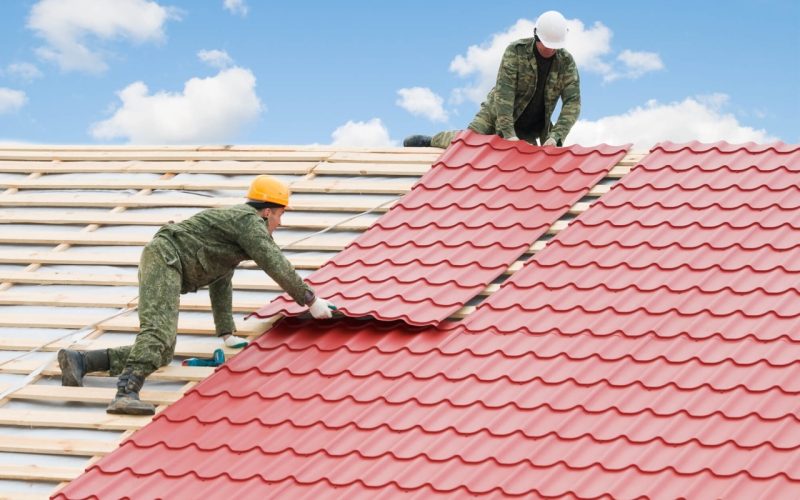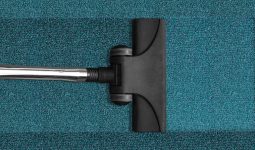The different types of roof tiles are hung from the framework of a roof by fixing them with nails.
The tiles are generally strung in parallel rows to keep the rain out and hide the pins that hold the previous row in place, with each row covering the row below it.
Roof tiles are also available for specific areas, such as the intersection of the planes of varied pitches. Ridge, hip, and valley tiles are among them.
These can be mechanically fastened or bedded and pointed in cement mortar.
Why wait until your roof starts to fall apart before learning about the many varieties of roofing tiles? It is neither budget-friendly nor safe for your home’s overall security.
Meanwhile, the roofing contractor or the tiler shouldn’t be the only ones who understand the many varieties of shingles.
The homeowner must also have a basic understanding of everything that pertains to his home.
Finally, the style and types of tiles you select will significantly impact the cost of materials, installation, replacement, and repairs.
It will also take into account how long your roof will survive. You can’t avoid having a roof on your house, regardless of how much it costs or how long it lasts.
Let’s have a look at the various varieties of roofing tiles available.
1. Slate Roof Tiles
The aesthetic appeal is the most apparent benefit of placing a slate roof on your home.
Slate roof tiles are produced entirely of natural stone. They have a naturally split surface and a lovely color variety that runs the length of the roof.
Slate roof tiles are also incredibly long-lasting, often outlasting the buildings on which they are installed. A slate roof can last 150 years if properly placed and maintained.
In addition, slate roof tiles are not only attractive and long-lasting, but they are also fireproof and environmentally beneficial.
Because the tiles are natural stone, they do not emit any VOCs or other pollutants throughout the manufacturing process.
They can also be recycled after being used on the roof or if a building is put on top of them. They can also help insulate the home beneath them, lowering energy bills for those who utilize them.
2. Concrete Roof Tiles
Concrete roof tiles are one type of roof tile that has been utilized as a replacement for more conventional materials like clay and slate for decades.
Many lovely period houses have concrete copies nearly indistinguishable from the classic ones, proving that concrete tiles are not always what you would think.
Concrete tiles are highly adaptable; they come in various styles, sizes, forms, and colors to fit any property.
Concrete roof tiles have been used in construction since the Roman Empire and are still one of the most widely used materials today.
Furthermore, concrete’s versatility allows it to be customized in various styles and colors, so you can achieve the exact aesthetic you want no matter what period your home is from or which appearance suits your taste.
Concrete roof tiles are made to be walked on and are sturdy enough to resist even the harshest weather conditions.
Because concrete roof tiles are dense and solid, their weight remains constant even after heavy rain. This implies that frost will not delaminate the tile surface in cold climates, as it might with clay roof tiles.
To sustain long-term wear and resist fading, concrete roof tiles can be colored through with oxides or given many topcoats.
3. Metal Roof Tiles
Copper, aluminum, zinc, and steel are the most prevalent metal roof tile materials. Steel and aluminum are the most common materials used.
Metal tiles are available in various shapes and sizes to resemble barrel tiles (Spanish roofs), slate tiles, wood shake tiles, and even traditional shingle patterns.
Metal roof tiles have grown in popularity due to their lightweight and simplicity of installation, but those same advantages also come with drawbacks: Metal is noisy.
They also dent quickly, making repair difficult. In addition, they are challenging to walk on, especially when wet. They are also good conductors of the outside temperature.
4. Composite Roof Tiles
Composite roof tiles, such as Brava’s entire collection of synthetic roof tiles, are created from a combination of natural and artificial components and offer numerous benefits over natural stone, wood, clay, metal, or concrete tiles.
They can readily mimic the appearance of any tile roofing product, with the added benefit of combining bespoke color combinations for most patterns.
They are less expensive, have more extended guarantees, and usually be fitted by most skilled roofers.
5. Polymeric Roof Tiles
It’s a relatively new shingle that is now aggressively promoting the domestic construction materials industry and enjoying strong demand.
Because of the components within its structure, polymeric tile has outstanding performance. This high-quality washed sand has been cleaned of all clay and other undesirable species.
Using the most recent scientific procedures, as well as high polymer and contemporary dyes.
6. Solar Roof Tiles
Solar roof tiles are one of the different types of roof tiles that is a cost-effective alternative to solar panels.
This type of roof tile is built into the roof rather than being put on existing roofs with racking systems. A roof installation and a solar array can be merged into a single component.
They can be a viable alternative in new constructions and substantial renovations. Furthermore, solar shingles are another name for solar roof tiles. Solar panels are the way to go if you want to get the most electricity out of the area you have.
On the other hand, solar shingles look like a regular roof without panels, but they use the available space inefficiently.
7. Terracotta Roof Tiles
Terracotta roof tiles do not warp or degrade like asphalt tiles, and their color does not fade.
Terracotta tiles can withstand various environmental conditions, including sun, rain, wind, snow, and ice.
These clay tiles have excellent insulating potential, so homeowners can save money on utility expenses all year. Both types of roof tiles require low maintenance.
Furthermore, once properly laid, terracotta roof tiles require very little maintenance over the roof’s life.
If a roof piece is damaged or requires alteration (e.g., installing a skylight), only the affected tiles must be replaced or removed.
Terracotta roof tiles are non-toxic, and if your roof is clean and healthy, they can collect and utilize rainwater.
8. Synthetic Spanic Barrel Roof Tiles
Brava’s synthetic Spanish Barrel roof tiles offer the timeless elegance of a Spanish Villa without the added expense of strengthening your entire roof.
Synthetic tiles are recyclable, fire-resistant, and have virtually endless color combinations. They also don’t require the same level of upkeep as one of the types of clay roof tiles.
9. Pantile Roof Tiles
A pantile is a fired roof tile that is often constructed of clay. It has an S-shaped look and is a single lap, which means that the tile’s end laps only the circuit directly below it.
Typically, two courses of flat tiles are lapped. A pantile-covered roof is lighter than a flat-tiled roof and is installed at a lower pitch.
10. Synthetic Cedar Roof Tiles
The most significant overall substitute for actual cedar shakes is your home’s brava cedar shake roof tile.
It’s made of a composite material that won’t flex, fracture, split, or rot, and because it doesn’t hold water, it won’t attract fungus as natural cedar shakes do.
These lightweight and straightforward shingles are installed easily, giving you the look of a cedar split shake roof without the drawbacks.
Unlike an untreated wood shingle, Brava’s cedar shake tile has a Class A or Class C fire rating and a Class 4 impact rating.
Your cedar shake tile roof will be lovely for years, with a wide range of color possibilities.








